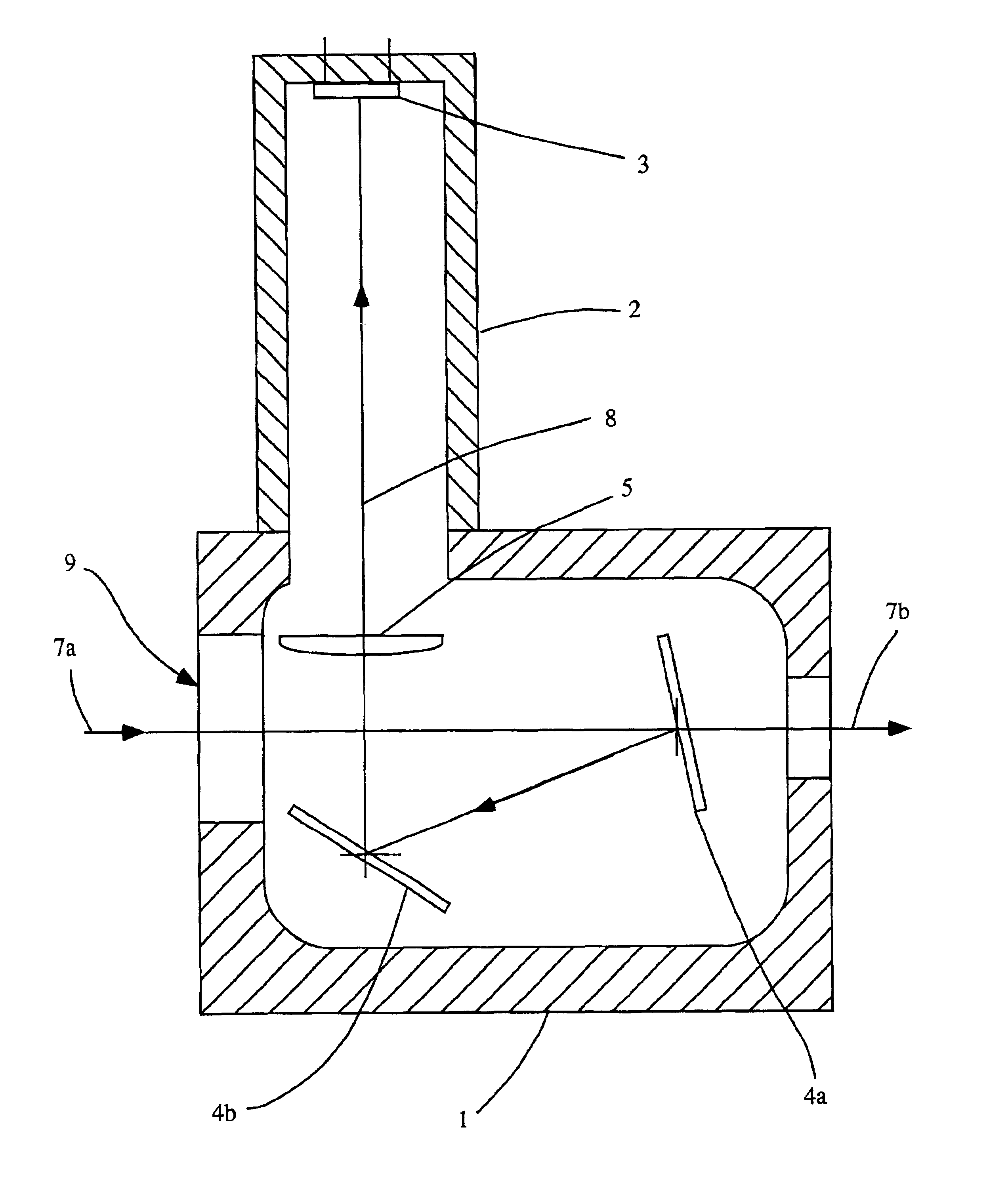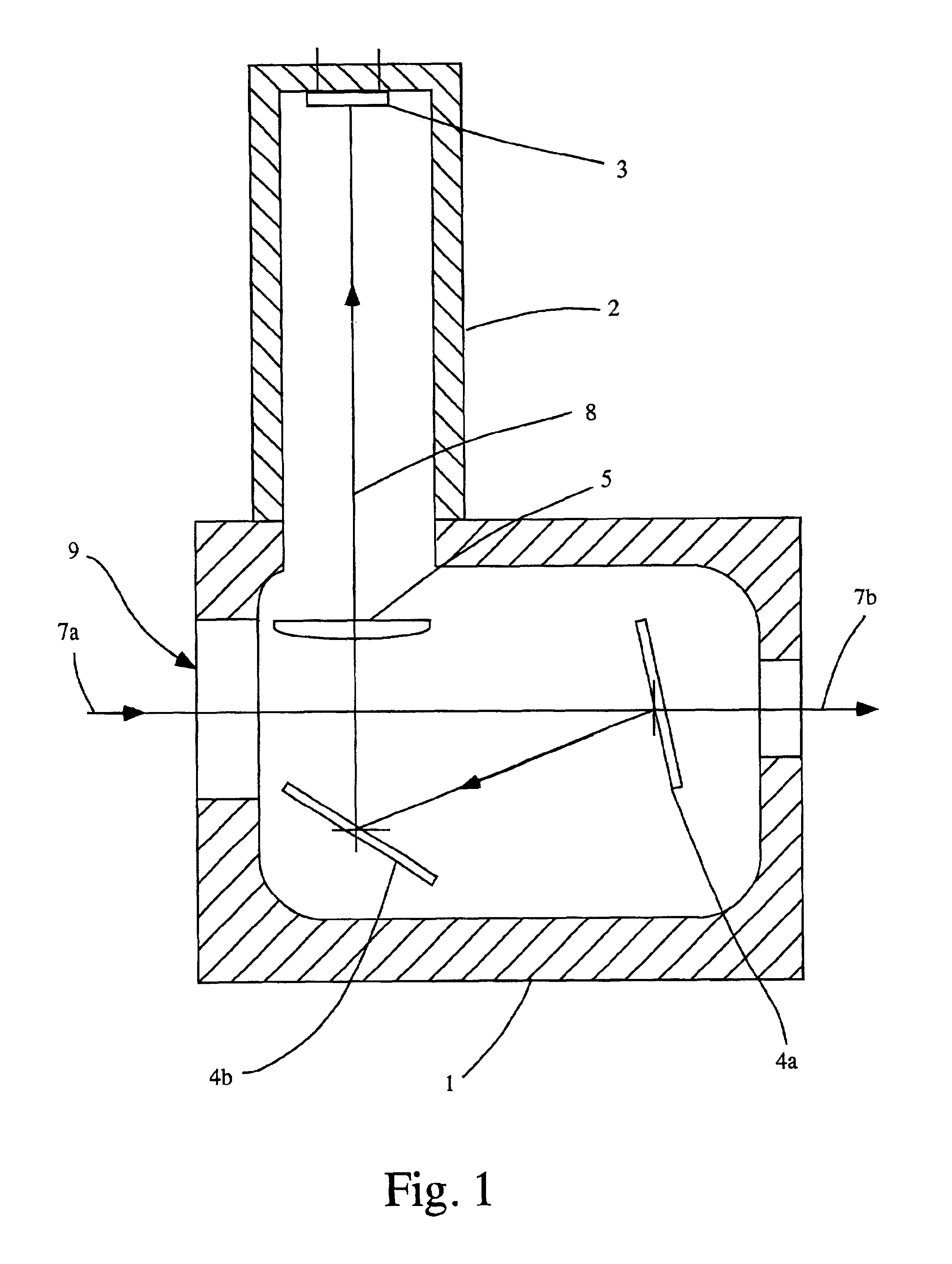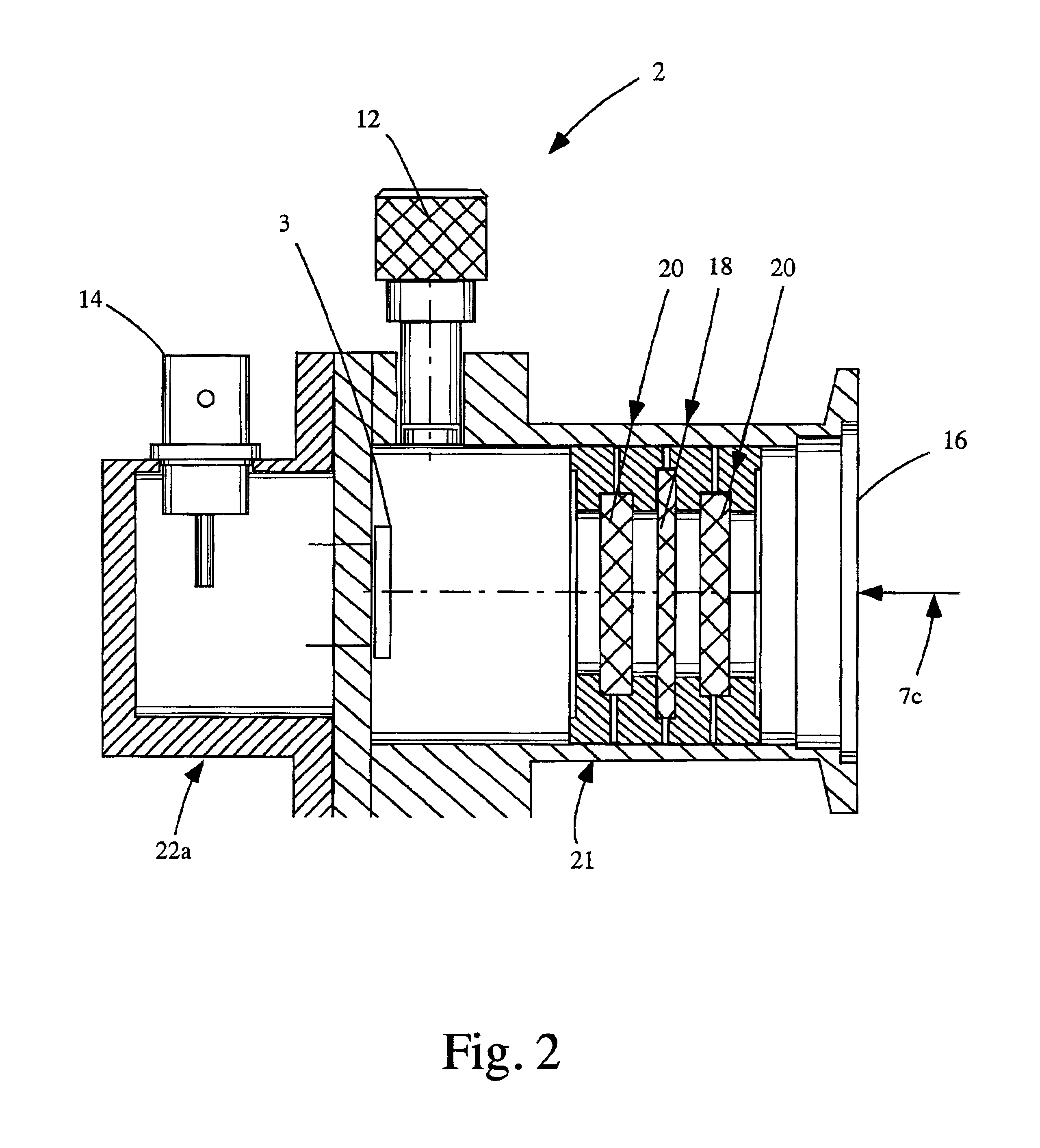Energy monitor for molecular fluorine laser
a molecular fluorine laser and energy monitor technology, applied in the field of energy monitoring devices, can solve the problems of detectors degrading strongly under 157 nm laser exposure, no reliable energy monitor for detecting the pulse energy of a molecular fluorine (f2) laser emitting around 157 nm, etc., and achieve the effect of reducing the instability of the detector caused by vuv radiation exposur
- Summary
- Abstract
- Description
- Claims
- Application Information
AI Technical Summary
Benefits of technology
Problems solved by technology
Method used
Image
Examples
Embodiment Construction
[0041]The invention provides a detector for a monitoring an output beam parameter of a molecular fluorine or argon fluoride gas discharge laser operating at 157 nm or 193 nm, respectively. The preferred embodiment generally discloses a detector for use with molecular fluorine lasers emitting around 157 nm, but that disclosure is meant to refer to use with ArF lasers emitting around 193 nm, as well, except for that discussion that specifically relates to separating a visible emission from a 157 nm emission which discussion is specifically drawn to the F2 laser. Preferred embodiments show little or no degradation of spectral sensitivity even after more than one billion laser shots or output pulses. The preferred embodiments include VUV-photodetectors which are very stable under strong 157 nm laser exposure with fluences >1 mJ / cm2 and laser repetition rates >500 Hz under inert gas purged illumination conditions.
[0042]The preferred embodiments include a purgeable vacuum tight energy mon...
PUM
 Login to View More
Login to View More Abstract
Description
Claims
Application Information
 Login to View More
Login to View More - R&D
- Intellectual Property
- Life Sciences
- Materials
- Tech Scout
- Unparalleled Data Quality
- Higher Quality Content
- 60% Fewer Hallucinations
Browse by: Latest US Patents, China's latest patents, Technical Efficacy Thesaurus, Application Domain, Technology Topic, Popular Technical Reports.
© 2025 PatSnap. All rights reserved.Legal|Privacy policy|Modern Slavery Act Transparency Statement|Sitemap|About US| Contact US: help@patsnap.com



